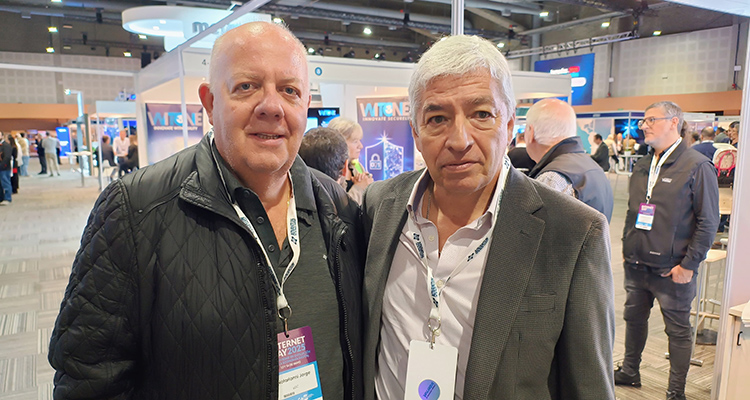
In recent years, cloud services adoption has surged significantly among broadcasters in Latin America (LATAM). Several factors have contributed to this trend, particularly during the COVID-19 pandemic.
As many traditional, on-premise broadcast technologies reach their end of life, organizations can no longer continue to use these outdated systems, especially with the growing lack of support and rising maintenance costs. Due to rapid changes in the media landscape that have increased pressure to stay competitive and relevant, broadcasters now require more modern, agile, and flexible solutions that can also help them transition toward online streaming and digital platforms. Cloud services offer the necessary scalability and adaptability broadcasters need to meet these changing demands and deliver content across various platforms.
A second factor driving broadcasters’ move to the cloud has been the need for business resilience and disaster recovery measures, highlighted by recent cyberattacks and security breaches. Moving operations to the cloud provides a more robust and cost-effective disaster recovery solution compared to traditional hardware-based setups with satellite transponders/fiber connectivity, which often require significant financial investments.
Cloud services adoption is also on the rise because the advance of IP technology has made the cloud more accessible and practical, enabling improved readiness and efficiency. As a result, broadcasters can maintain critical infrastructure on-premise while gradually migrating other operations to the cloud. In doing so, broadcasters can reduce the burden on their on-premise infrastructure, freeing up valuable resources for other critical tasks.
For broadcasters working to adapt to changing consumer behaviors, market demands, and technologies, cloud services are proving to be an essential tool. This article discusses the challenges and opportunities facing traditional broadcasters in LATAM as they move to cloud technologies, followed by tips to ensure a successful transition. Finally, it will conclude by envisioning how the adoption of cloud services will become integral to the success of the modern media organization.
Challenges and Opportunities
Traditional broadcasters in LATAM have undoubtedly felt the impact of the digital transformation wave, and these challenges will be explored in this section. However, by gradually integrating cloud solutions and hybrid approaches, traditional broadcasters can benefit from streamlined workflows, increased scalability, and optimized resource allocation, ultimately leading to improved operational efficiency.
One of the main challenges broadcasters face is maintaining a high level of reliability in their operations. Broadcasters are often required to have near-constant uptime (five nines, or 99.999% availability) to ensure a seamless experience for their audience. While many are interested in migrating to the cloud to take advantage of its benefits, there is still hesitation regarding the cloud’s ability to provide the same level of reliability as on-premise systems.
Cost is another significant challenge in adopting cloud or hybrid approaches. Traditional broadcasters have invested heavily in their existing infrastructure, and they typically operate on a long-term basis, which often leads to lower overall costs over time. Cloud services, while becoming more affordable, still face challenges related to egress costs. These additional expenses incurred by data leaving the cloud platform can pose significant budgetary challenges, especially for broadcasters with large-scale content distribution requirements, such as satellite broadcasting.
Furthermore, the lack of cloud expertise within traditional broadcasting organizations poses a challenge. The shift to cloud-based operations demands a certain level of knowledge and skill in managing cloud technologies. Accustomed to their legacy systems and traditional methods, some broadcasters may lack the necessary expertise to navigate the complexities of cloud adoption, especially among their senior leadership. The changing landscape also brings new perspectives, with younger, more tech-savvy professionals entering leadership roles in which they are open to embracing cloud technologies. By investing in cloud education and training, broadcasters can empower their teams to handle cloud-based workflows effectively.
With strategic investments in cloud education, fresh perspectives among leadership, and careful consideration of cost implications, broadcasters can leverage cloud solutions to improve their overall broadcasting operations and meet the demands of today’s digital landscape.
A Phased Approach to Cloud Migration
To ensure a smooth and successful transition from on-premise to cloud technologies, broadcasters in LATAM can follow a phased approach, accounting for the complexity of their contribution, playout, and distribution workflows. Meanwhile, they should recognize that a complete migration to the cloud may take several years, meaning that their technology will inevitably take the form of a hybrid system, even if it’s temporary. Here are eight tips that will help organizations on this journey:
- Conduct a thorough analysis of the entire broadcasting workflow. Identify which parts of the workflow can be effectively moved to the cloud and prioritize the migration steps.
- Adopt a phased migration approach. Start with less mission-critical areas or events that can take advantage of cloud elasticity, such as live events and streaming. Gradually move on to more critical areas such as media asset storage and disaster recovery. This way, broadcasters can gain experience and build confidence in cloud technologies while ensuring a high level of reliability.
- Carefully assess the costs associated with cloud adoption, including egress costs. Compare them with the potential benefits and efficiencies gained, ensuring that the cloud-based approach aligns with the organization’s long-term business objectives.
- Bridge the knowledge gap by investing in cloud certification and training programs. Building expertise in cloud technologies will enable broadcasting teams to navigate the complexities of cloud-based workflows more effectively.
- Prioritize cable channels first when migrating linear broadcasts. Because cable often serves a more localized audience, these channels can serve as a testing ground before migrating to major broadcast channels.
- Use the cloud to establish disaster recovery mechanisms to safeguard critical operations. Cloud-based disaster recovery solutions can offer cost-effective alternatives compared to traditional hardware-based setups.
- Engage in industry collaborations and partnerships to share best practices, experiences, and lessons learned from cloud adoption. Learning from other broadcasters’ experiences can help streamline the migration process.
- Advocate the benefits of cloud adoption among senior leadership and decision-makers in broadcasting organizations. Emphasize the potential for increased scalability, flexibility, cost savings, and improved operational efficiency offered by cloud technologies.
By adopting a well-planned and phased approach, embracing a hybrid model, and leveraging industry collaboration and cloud expertise, broadcasters in LATAM can navigate the complexities of moving their workflows to the cloud and ensure a smooth and successful transition.
Cloud Services Are Already Shaping the Future
The future of cloud services adoption for broadcasters in LATAM holds significant potential for evolution and innovation. One of the primary ongoing developments is the adoption of unified media workflows that streamline operations across digital, broadcast, and cable platforms. By consolidating these workflows, broadcasters can optimize costs, simplify management, and enhance operational efficiency.
Consolidation also entails a reduction in operational costs. By leveraging cloud technologies, broadcasters are optimizing resource usage, eliminating redundancy, and achieving more cost-effective operations. Combined with the rise of streaming services, broadcasters can deliver content more seamlessly across various channels, enabling them to place a strong emphasis on multiplatform capabilities. Continued innovation in cloud-based content delivery, personalized user experiences, and interactive features will enable broadcasters to experiment with new formats and deliver captivating content to their audiences.
Moreover, cloud-based analytics tools will empower broadcasters to gain deeper insights into audience behavior and preferences. This data-driven approach will enable more targeted content delivery and better ad targeting, maximizing the value of advertising inventory while opening opportunities for new advertising models and revenue streams. Over time, AI and automation will also play an increasing role in content creation, curation, and distribution. Broadcasters will leverage AI-driven solutions to enhance content discovery, personalization, and audience engagement.
Overall, the future of cloud services adoption among LATAM broadcasters is marked by cost optimization, revenue generation from digital platforms, simplified workflows, and a greater focus on multiplatform capabilities. Cloud technologies will continue to facilitate the evolution of broadcasting, enabling innovation, scalability, and a more data-driven approach to content delivery and audience engagement. By embracing cloud services strategically, broadcasters can position themselves for greater competition and relevancy in today’s dynamic media landscape.




